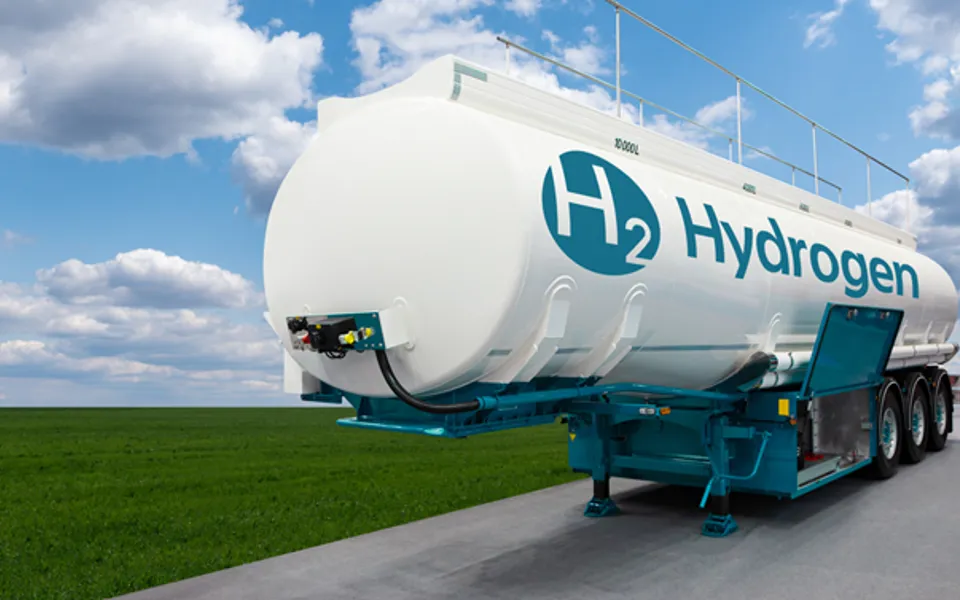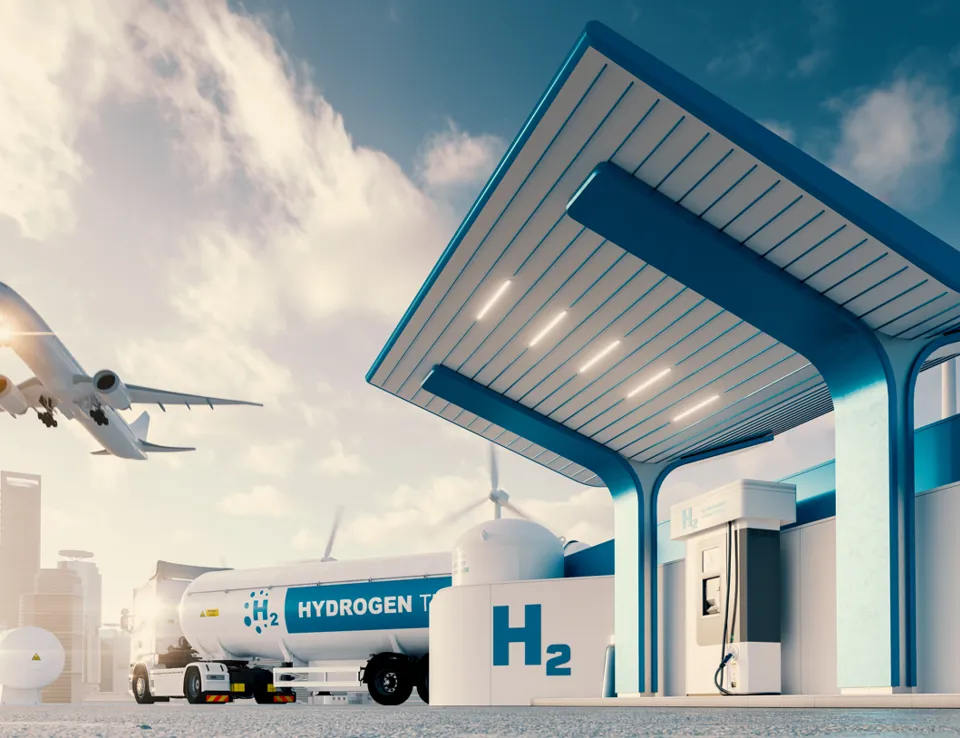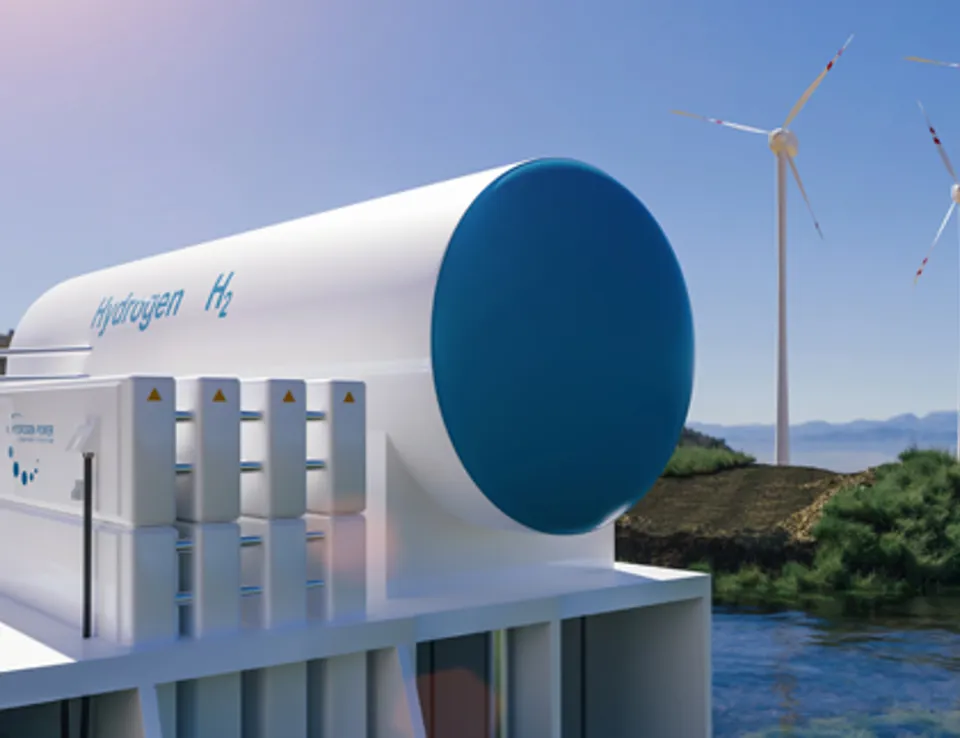
Hydrogen has an important role in the transition towards zero-emission transportation
01 Feb 2021
The needs of the transportation sector are quite diverse and difficult to meet with a single, zero-emission technology solution. Electrification has made rapid progress, particularly in the automotive sector, and is expected to play a leading role in several forms of mobility as battery pack costs continue to decline, and electric vehicles become more affordable.
However, there is a growing recognition that battery power alone cannot leap to meet the requirements of certain long-distance and energy-intensive modes of transportation in trucking, rail, marine, aviation and other sectors. There are several transportation applications where alternatives such as hydrogen, with superior gravimetric energy density (kWh/kg), are needed to further enable decarbonisation. This article attempts to touch upon those applications and remind the readers that battery storage and hydrogen fuel cells are not competitors, but rather, complementary technologies in the transition towards a zero-emission transportation ecosystem.
Hydrogen for commercial vehicles
According to US EPA 2018 data, Medium and Heavy-Duty trucks account for 23% of the GHG emissions generated from the transportation sector. Class 8 on-highway trucks are a significant contributor due to their population, annual mileage, and freight load. Federal and state regulations and policies have spurred the industry to develop, demonstrate and deploy battery and hydrogen-powered trucks. The range expectation from Class 8 trucks varies significantly between fleets and their operations. Trucks in port drayage applications, for instance, typically cover less than 200 miles daily. But most of the Class 8 tractors are either deployed in regional haul applications (300 - 400 miles range) or a long-haul application (600+ miles range). Depending on the duty cycle, battery-electric trucks deployed thus far provide a range of up to 200 miles or slightly more, which conceivably will increase due to continued enhancement in the energy density of battery packs, and either fully or partially meet the range requirements of regional haul applications. However, battery pack cost, weight and charging times could be a challenge for some regional haul and most of the long-haul applications. This is where hydrogen can be very effective and provide a relatively seamless transition from diesel trucks in terms of range, available payload, and time to refuel. Transit buses are another interesting heavy-duty commercial vehicle application where range and energy requirements can be widely different. While monitoring several battery electric and hydrogen fuel cell pilot projects in the state of California, we have seen range requirements from 150 miles to 300 miles across different transit agencies and routes. Also, depending on the location, heating and air conditioning can take a significant toll on energy consumption and battery range. As a result of these variations, the transit bus sector has seen the adoption of both battery and hydrogen fuel cells.
Hydrogen for rail
Hydrogen fuel cells are well suited to substituting for diesel engines in regional and commuter trains. Fuel cell and battery hybrid propulsion are being demonstrated in rail applications in Europe, North America, and China. In addition to zero-emissions at point of use, hydrogen-powered rail can also provide major improvements in the noise and vibration over diesel locomotives. While some level of electrification has been observed in Europe, the rail system in North America is predominantly diesel based. Retrofitting existing locomotives with hydrogen fuel cells and battery hybrids can be cost-effective compared to the electrification of railway tracks.
Railyard switcher locomotives are another application for hydrogen as they have a disproportionate impact on local air quality and pose health risks in the surrounding communities.
Hydrogen for marine
Marine sector is expected to be a key follower in the adoption of hydrogen fuel or fuels derived from renewable hydrogen such as ammonia. The International Maritime Organization (IMO) has adopted mandatory measures to reduce annual emissions of greenhouse gases from international shipping by at least 50% by 2050 compared to 2008 levels. This includes R&D of low/zero-carbon fuel, provision of a ship and shore power supply from renewable sources, and infrastructure to support the supply of alternative low carbon and zero-carbon fuels. Early adoption of hydrogen fuel cells can be expected in smaller vessels such as ferries and river vessels, cruise ship hotel loads and emergency systems, auxiliary power for bulk or container ships, and shore power supply. Emissions in the port areas and health risk to local communities are of particular concern to regulatory bodies and will play a role in driving adoption of alternative fuels such as hydrogen. Use of compressed or liquid hydrogen to power the main engine may not be feasible for vessels such as cargo ships that spend days or weeks at sea due to tank size limitations. Marine sector is looking at green ammonia as a possible solution due to better energy density than liquid hydrogen and GHG emission reduction potential.
Hydrogen for aviation
Hydrogen is being considered as a promising fuel for zero-emission aircraft. While hydrogen fuel offers superior gravimetric energy density compared to jet fuel, the weight and volume of hydrogen storage need to be reduced to meet the requirements of the aviation industry. This has prompted the industry to investigate liquid hydrogen storage as a possible solution. Therefore, it is anticipated that the main propulsion for long haul aircraft will still be powered by jet fuel in the foreseeable future, but fuel cell modules can supply electricity to the aircraft electrical system as emergency generator sets or as an auxiliary power unit. However, the continued growth of e-commerce and the anticipated emergence of air taxis for urban mobility will unlock new markets for both battery and hydrogen. While short-range urban travel can be met by battery packs, hydrogen is a good candidate for zero-emission short-haul air travel as well as hub and spoke air cargo operations spanning a few hundred miles. This is the space that a zero-carbon aviation startup, ZeroAvia, is addressing with their hydrogen fuel cell-powered aircraft which has attracted interest and investment from major companies such as Amazon and Shell.
The challenges of shifting to hydrogen
Shifting to hydrogen as a fuel for transportation is not without its challenges. Fuel cell system costs are significantly higher today but can decline towards $100/kW or lower as production volume increases and manufacturers can reduce cost with use of cheaper graphite bipolar plates, reduced catalyst content and improved recycling or re-use of catalyst, bipolar plates, and fuel cells. Similarly, the cost of dispensing hydrogen fuel is significantly higher today. This is because (a) low demand of compressed hydrogen drives up the costs for industrial gas companies (b) transportation of pressurised gaseous hydrogen from production facility to the refueling station in tube trailers is not cost-efficient, and (c) small scale refueling stations experience low utilisation but nevertheless require appreciable capital equipment for compressing, storing, cooling and dispensing hydrogen. Again, these cost factors can be mitigated with an increase in demand of hydrogen due to requirements from multiple abovementioned market segments which can bring about economies of scale and ultimately drive down prices to $3-$4 per kg. Our analysis shows that at $5-$6 per kg, hydrogen fuel cell-powered Class 8 trucks can be competitive with their diesel counterpart on a total cost of ownership basis by 2030 without support from economic subsidies.
Another key challenge is reducing the cost, weight and volume of on-board hydrogen storage. The automotive sector is using high pressure (70 MPa) hydrogen tanks to maximize onboard fuel capacity. But, as mentioned earlier, the industry is also looking into liquid hydrogen storage as a possible solution to this problem which can reduce storage volume by about 40% compared to high pressure gaseous tanks.
A transition towards a hydrogen economy will also require significant investment in infrastructure and a network of refueling facilities along highway corridors, airports, seaports, private commercial facilities, etc.
Conclusions
In conclusion, hydrogen has strong potential to enable decarbonization in several transportation segments and can play an important role in the transition towards a zero-emission ecosystem. Demand from several sectors can provide the necessary scale to help accelerate the development of fuel cell technology and storage systems, reduce production costs, put downward pressure on cost of fuel generation and distribution, and promote downstream infrastructure. With several large corporations and start-ups investing in and promoting hydrogen, industry stakeholders must take note of the opportunities that lie ahead and keep abreast of the progress. Ricardo has been deeply involved in monitoring the hydrogen ecosystem and supporting clients across OEMs, technology providers, government agencies and other stakeholders with market assessment, growth opportunities, technology roadmap, cost benchmarking, total cost of ownership, hydrogen fuelling economics, pilot project monitoring, and codes/standards reviews.




 Follow Ricardo plc for regular updates
Follow Ricardo plc for regular updates




